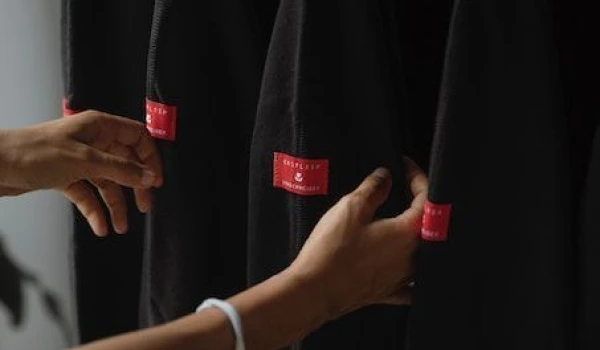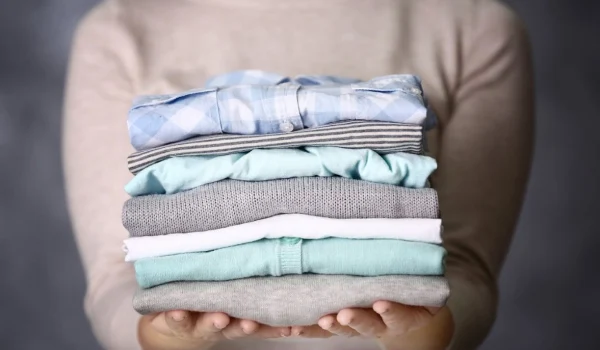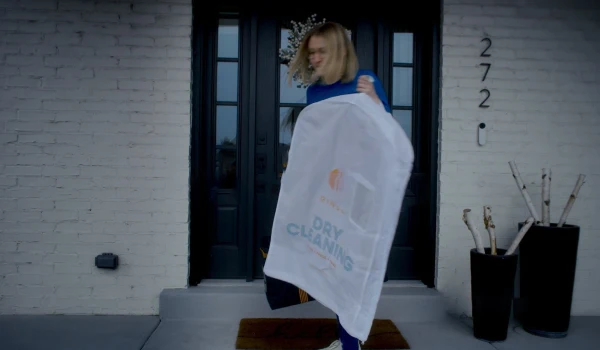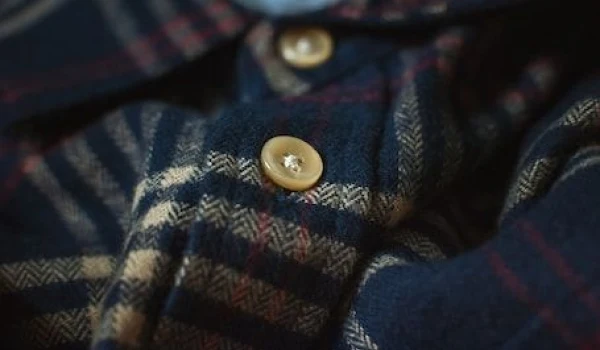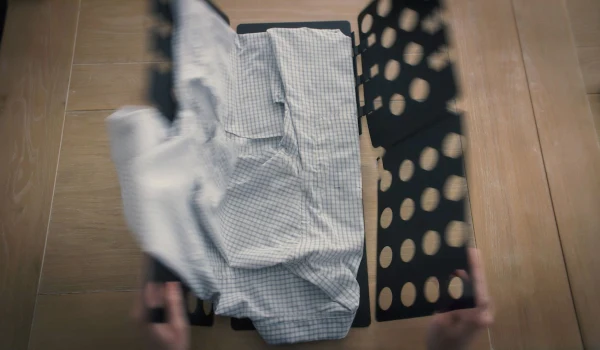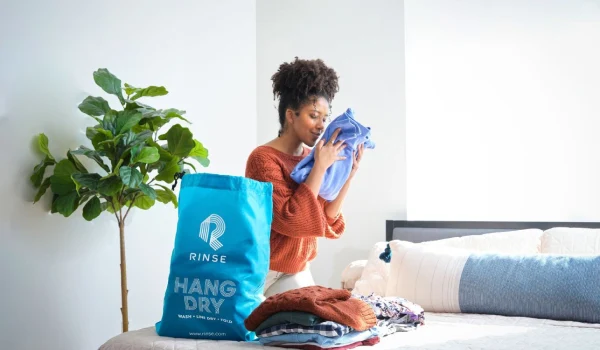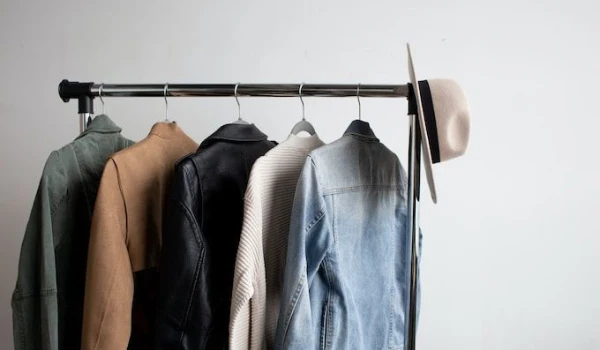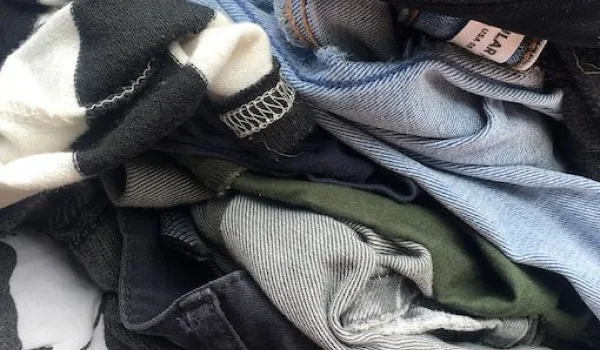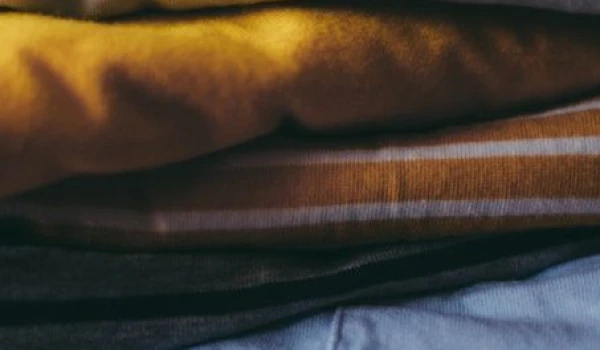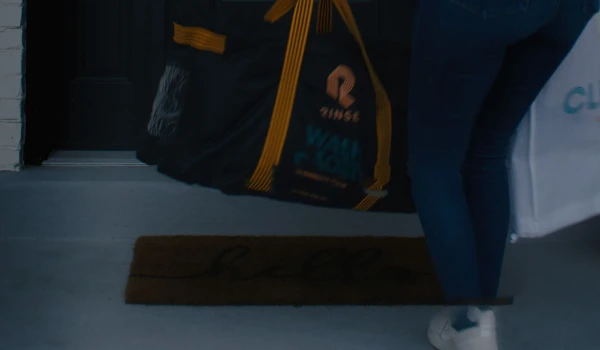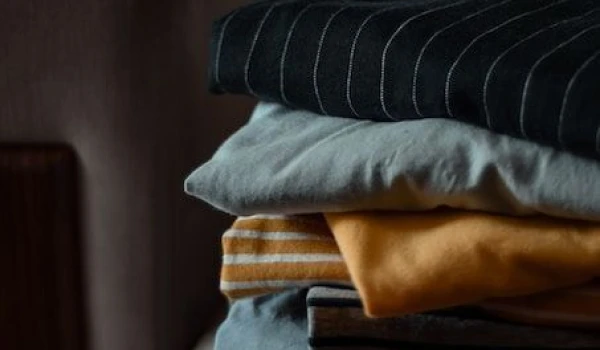Care
Clothing care tips to make your wardrobe last

Introduction
Running a restaurant is no easy task, and maintaining cleanliness is one of the most significant challenges, especially when it comes to keeping linens, aprons, and uniforms spotless. From table linens and napkins to aprons and bar towels, these items are essential for maintaining hygiene and enhancing your restaurant’s image. However, ensuring they are laundered efficiently while managing the day-to-day demands of running a business can be overwhelming.
This is where restaurant laundry services come in. They provide reliable, efficient, and professional cleaning services tailored to restaurants, ensuring that your linens are always fresh, clean, and ready for use. If you’re a restaurant owner who struggles to keep up with the demands of laundry, this guide will help you understand the importance of restaurant laundry services and how to choose the right one.
What Is A Restaurant Laundry Service?
A restaurant laundry service specializes in cleaning and maintaining textiles that are vital to the restaurant industry, such as table linens, napkins, aprons, and uniforms. These services typically offer a variety of solutions, from linen rental to on-demand laundry services, and they ensure that your items are cleaned, pressed, and delivered in a timely manner. They can handle everything from stain removal to deep cleaning, saving you the hassle of doing it in-house.
In the restaurant industry, cleanliness is paramount. Dirty or poorly maintained linens can negatively impact the customer experience, making it crucial to have a reliable laundry service to keep your establishment looking its best. Whether it’s ensuring your staff is in pristine uniforms or that your tablecloths are spotless, a restaurant laundry service is an essential part of your business’s operations.

Why Do You Need A Restaurant Laundry Service?
Maintaining cleanliness and efficiency in a restaurant laundry process is not only time-consuming but also resource-intensive. Many restaurant owners find it challenging to keep up with the sheer volume of laundry they generate daily, leading to inconsistent results or delays in having clean linens available. Here are a few reasons why outsourcing to a professional laundry service is beneficial:
-
Consistent and Reliable Results
Restaurant laundry services guarantee consistently clean and fresh linens, aprons, and towels. These companies use commercial-grade machines and cleaning solutions that deliver better results than in-house laundering. Whether it’s removing stubborn stains or maintaining the quality of the fabrics, a laundry service can ensure your linens are consistently well-maintained. -
Faster and More Efficient Washes
Restaurants require quick turnaround times for their laundry needs. Outsourcing your laundry ensures faster, more efficient washes, so you don’t have to worry about running out of clean aprons or towels during busy shifts. Most services offer scheduled pick-up and delivery, making it a hassle-free solution for restaurant owners.
How Much Does A Restaurant Laundry Service Cost?
The cost of restaurant laundry services can vary depending on several factors, such as the size of your restaurant, the type of linens and uniforms you need cleaned, and the frequency of service. Many services offer flexible pricing options based on your specific needs, allowing you to tailor the service to your budget.
Some services offer linen rental, where the cost includes both the rental and laundering of linens, while others charge per pound or item of laundry. On average, restaurant laundry services charge between $0.50 to $1.00 per pound for laundry, while rental services for table linens and napkins may cost between $10 to $15 per week, depending on the number of items.
When considering the cost, it’s essential to weigh the expense of outsourcing laundry versus the cost of handling it in-house. The labor, equipment, and utility costs associated with maintaining your own laundry operation often make outsourcing a more cost-effective and efficient solution.

3 Benefits Of Restaurant Laundry Services
Outsourcing your laundry needs to a professional service offers numerous advantages that can positively impact your restaurant’s operations. Here are a few key benefits:
-
Time-Saving
Running a restaurant is demanding, and managing in-house laundry adds to your daily workload. By outsourcing your laundry needs, you free up valuable time that can be spent on other critical aspects of your business, such as customer service or food preparation. -
Cost-Effectiveness
Maintaining in-house laundry equipment and staff can be costly. By outsourcing your laundry, you can reduce costs related to labor, equipment maintenance, and utilities. Many restaurant owners find that outsourcing their laundry is a more budget-friendly solution, especially when they factor in the time saved. -
Improved Restaurant Appearance
Clean and well-maintained linens contribute to the overall appearance of your restaurant. Whether it’s crisp tablecloths, spotless napkins, or well-pressed uniforms, outsourcing your laundry ensures that your restaurant always looks professional and inviting to guests.
How To Choose A Restaurant Laundry Service
Selecting the right restaurant laundry service is crucial for ensuring that your linens are well cared for and your business runs smoothly. Here are a few considerations to keep in mind when choosing a laundry service:
-
Create a Budget
Before selecting a laundry service, determine how much you’re willing to spend on linen cleaning and maintenance. Some services offer flexible pricing plans based on the frequency of service and the types of linens you need cleaned. -
Look at Reviews
Research customer reviews to get an idea of the quality and reliability of the laundry service you’re considering. Look for companies with positive reviews for timely deliveries, quality of cleaning, and customer service. -
Check Pricing Transparency
Ensure the service you choose is transparent about its pricing structure. Some services may have hidden fees for deliveries or specific cleaning processes. A transparent company will clearly outline its pricing so you can avoid surprises on your bill.

Partner With Rinse For The Ultimate Restaurant Laundry Service Experience
If you’re looking for a reliable, efficient, and high-quality laundry service for your restaurant, Rinse is the perfect partner. Our laundry services are designed to save you time and money while ensuring that your linens, aprons, and uniforms are always clean and ready for use.
At Rinse, we prioritize the quality and cleanliness of every item we handle, ensuring that your restaurant maintains its high standards of hygiene and appearance. Our flexible scheduling, eco-friendly cleaning methods, and outstanding customer service make us the ideal choice for restaurant owners.
Experience the benefits of outsourcing your laundry with Rinse and take the hassle out of maintaining your linens. Contact us today to learn more and get started with a laundry service that works for you.
Useful Resources:
Partner with Rinse today to see our skill in action.

Have laundry or dry cleaning to do?
Rinse picks up, cleans and delivers 7 days a week. Amazingly awesome. Ridiculously simple.

Introduction
When it comes to keeping your clothes looking their best, the debate between using a garment steamer and a clothes iron is a common one. Both tools serve a similar purpose—removing wrinkles and ensuring that your garments look sharp—but their strengths and weaknesses vary depending on the fabric and the situation. Understanding when to use each tool will help you extend the life of your clothing and streamline your garment care routine.
Whether you’re using a handheld steamer for a quick touch-up or a traditional clothes iron on an iron board for more precise pressing, the right tool can make all the difference. In this guide, we’ll walk you through the pros and cons of both steamers and irons, and show you how to use each effectively.

When to Choose a Steamer
A garment steamer can be a real game changer, especially for delicate fabrics and casual wear. While an iron requires direct contact with the fabric, steamers work by gently loosening wrinkles using vapor, which can be beneficial for certain types of garments.
Pros of a Steamer
-
Gentler on Delicate Fabrics: One of the biggest advantages of a fabric steamer is how gentle it is on sensitive materials. It’s ideal for delicates such as silk, chiffon, lace, and even cashmere. The absence of direct heat contact reduces the risk of burning or scorching your garments.
-
Ease of Use: A handheld steamer is simple to operate. With a water tank that heats up quickly, it’s perfect for refreshing clothes in a matter of minutes. Plus, the upright design eliminates the need for an iron board, making it incredibly convenient for those with limited space.
-
Quick Wrinkle Removal: Steamers excel at quickly and efficiently removing wrinkles from fabrics, especially on lightweight materials like t-shirts, blouses, and casual trousers. A few passes with the handheld steamer and you’re good to go.
-
Versatility: Beyond just clothing, fabric steamers are highly versatile. You can use them to remove wrinkles from curtains, upholstery, and even bedding. This flexibility makes them a valuable tool in any household.
-
No Ironing Board Needed: Because you can steam clothes while they’re hanging, there’s no need for a bulky iron board. This can make your garment care routine quicker and more efficient, especially when dealing with larger items like jackets or dresses.
Cons of a Steamer
-
Not Ideal for Heavy Wrinkles: While a steamer is great for casual, lightweight fabrics, it may not perform as well on heavy garments like thick wool or linen, which tend to hold deeper creases. An iron is often better for heavy wrinkles.
-
Not as Effective on Certain Fabrics: Some fabrics, such as starched cotton or suede, don’t respond well to steam. For these materials, a clothes iron is usually the better choice.
-
Potential Water Spots: If not used correctly, steamers can leave water spots on garments, especially darker fabrics. To avoid this, it’s essential to use distilled water and hold the steamer at a safe distance from the fabric.
How to Steam
Using a garment steamer is straightforward, but following the correct steps ensures you get the best results:
-
Fill the Water Tank: Start by filling the water tank with distilled water. This helps prevent mineral buildup and ensures your steamer functions optimally.
-
Preheat the Steamer: Turn on the steamer and give it a couple of minutes to heat up. You’ll know it’s ready when steam starts to emit from the nozzle.
-
Hang the Garment: Place your garment on a hanger. For delicate fabrics, keep the steamer a few inches away to avoid leaving water spots.
-
Steam the Garment: Run the steamer vertically along the wrinkles, allowing the steam to penetrate the fabric and relax the fibers. Always keep the steamer moving to avoid concentrating heat in one spot.
-
Let It Dry: After steaming, let the garment hang for a few minutes to fully dry before wearing or storing.

When to Choose an Iron
When you need sharp creases or have to tackle deeply wrinkled, heavier fabrics, a clothes iron becomes the better option. Irons work by applying both heat and pressure, which is more effective for certain fabric types.
Pros of an Iron
-
Precision in Removing Tough Wrinkles: For hard-to-remove wrinkles, especially on fabrics like linen, denim, and starched cotton, an iron is your best friend. The combination of heat and pressure makes it perfect for achieving a crisp, polished look.
-
Versatility with Various Fabrics: A steam iron can handle a wide range of fabrics, from silk to wool to denim, provided you adjust the heat setting accordingly. Many irons also come with additional features like a steam burst or spray function for extra wrinkle-fighting power.
-
Creating Pleats and Crisp Lines: An iron is essential for creating sharp creases, pleats, and folds, particularly on dress pants and shirts. If you’re after a crisp, professional finish, ironing is the way to go.
-
Effectiveness with Heavy Fabrics: For heavy garments like coats, jackets, and thick trousers, an iron is far more effective than a steamer. The added pressure of the iron ensures deeper wrinkles are flattened out.
Cons of an Iron
-
Risk of Fabric Damage: One of the main drawbacks of ironing is the potential to scorch or burn delicate fabrics if you’re not careful with the heat settings. Always check the garment label for fabric care instructions to avoid this.
-
Requires an Ironing Board: Unlike a handheld steamer, using an iron necessitates an iron board, which can be cumbersome and requires extra space.
-
More Time-Consuming: Ironing can be more time-consuming than steaming, especially if you’re working with multiple garments that need to be repositioned several times.
-
Risk of Shiny Marks: Applying too much pressure on certain fabrics can result in shiny marks, particularly on darker or synthetic materials. Be cautious and use a pressing cloth when necessary.
How to Use an Iron
Follow these steps to ensure perfect results when ironing:
-
Set the Temperature: Adjust the iron to the appropriate temperature based on the fabric. Delicates like silk require low heat, while heavier fabrics like cotton can handle higher temperatures.
-
Fill the Water Tank: If using a steam iron, fill the water tank with distilled water to prevent mineral buildup.
-
Ironing Technique: Place the garment on the iron board, smoothing out any bunches or folds. Start with smaller areas like collars and sleeves before moving on to larger sections.
-
Use Steam: For stubborn wrinkles, engage the steam function. The moisture will help relax the fibers, making it easier to smooth out the fabric.
-
Avoid Shiny Marks: Keep the iron moving and avoid applying too much pressure in one spot to prevent shiny marks on dark or synthetic fabrics.

Clothing Care Made Simple: Trust Rinse for Your Garments’ Best Care
At Rinse, we understand how crucial proper garment care is. Whenever your clothes need to come back wrinkle free and crisply pressed, our laundry and dry-cleaning services have you covered.
Our expert team uses the best equipment, ensuring your garments look their finest, and we offer convenient pick-up and delivery, saving you time and effort. Whether it’s removing wrinkles from your delicate silk blouse or giving your wool suit the perfect press, Rinse is your go-to for all your laundry needs.
Experience the best in garment care today! Try Rinse and keep your wardrobe looking sharp and fresh with minimal effort.
Fore more helpful tips, read our articles on on proper garment care, how to decode laundry symbols, and how to read clothing labels.
Contact us at Rinse today to see our skill in action.

Have laundry or dry cleaning to do?
Rinse picks up, cleans and delivers 7 days a week. Amazingly awesome. Ridiculously simple.

Introduction
Sustainable fashion has been gaining momentum in recent years, as consumers become more aware of the environmental impact of the fashion industry. From ethical production processes to eco-friendly materials, the demand for sustainability is reshaping how we think about clothes. A major part of this shift involves sustainable fabrics, which are designed to minimize harm to the environment during production and decomposition. In this article, we’ll dive into the world of sustainable fabrics, explore the different types available, and highlight some of the most popular options. By understanding these fabrics, you can make more informed choices in your wardrobe while contributing to a healthier planet.
What Are Sustainable Fabrics?
Sustainable fabrics are materials produced with minimal environmental impact, making them an essential component of sustainable fashion. These fabrics are typically created from renewable resources, biodegradable materials, or recycled fibers, ensuring that their production process and eventual disposal don’t cause significant harm to the environment. They differ from conventional fabrics in several key ways, including reduced energy consumption, lower water usage, and the avoidance of toxic chemicals in the production process.
What makes a fabric sustainable can include a variety of factors, such as:
-
Biodegradability: Sustainable fabrics often break down naturally without leaving harmful residues.
-
Renewable resources: Materials derived from renewable sources, like plant-based fibers, reduce reliance on finite resources.
-
Low environmental impact: The cultivation, harvesting, and processing of these materials usually require fewer pesticides, chemicals, and water than traditional textiles.
In contrast, conventional fabrics like polyester or non-organic cotton often require high levels of energy, water, and chemical inputs, leading to significant environmental degradation.

Types of Sustainable Fabrics
Several types of sustainable fabrics have become prominent as the fashion industry pivots towards eco-consciousness. These categories reflect different approaches to sustainable production.
Animal-Derived Fabrics
While animal-derived fabrics like wool and silk may seem sustainable because they come from natural sources, sustainability depends on the farming and harvesting methods used. When produced responsibly, such fabrics can have a relatively low environmental impact. For instance, wool from regenerative farming can actually improve soil health.
Organic Fabrics
Organic fabrics are derived from plants grown without synthetic pesticides, herbicides, or genetically modified organisms. Organic cotton, for instance, is a natural fiber grown using methods that replenish soil fertility and reduce chemical runoff. This type of sustainable fabric is gaining popularity for its comfort and environmental benefits.
Vegan Fabrics
Vegan fabrics avoid any animal products and are typically made from plant fibers or synthetics. Materials like Tencel, which is derived from wood pulp, and Piñatex, which is made from pineapple leaves, are great examples of vegan fabrics that offer eco-friendly alternatives to animal-based textiles like leather or wool.

10 Sustainable Fabrics You Should Know About
Let’s explore some of the most popular sustainable fabrics you can incorporate into your wardrobe. Each offers unique benefits and plays a role in the future of sustainable fashion.
1. Organic Cotton
Organic cotton is one of the most widely recognized sustainable fabrics. Unlike traditional cotton, it’s grown without harmful pesticides and uses less water. It’s biodegradable and known for its softness, making it a versatile choice for various garments.
2. Hemp
Hemp is a highly sustainable natural fiber that grows quickly with little water and no pesticides. It’s durable, biodegradable, and has been used for centuries in textiles. As a sustainable fabric, hemp stands out for its strength and eco-friendly cultivation.
3. Tencel (Lyocell)
Tencel, also known as Lyocell, is a biodegradable fiber made from wood pulp, typically sourced from eucalyptus trees. Produced by Lenzing, this cellulose-based material is highly breathable, soft, and sustainable, making it an ideal fabric for eco-conscious consumers.
4. Recycled Polyester
Recycled polyester is made from post-consumer plastic bottles or other polyester waste. By giving new life to old materials, this sustainable fabric helps reduce plastic waste and the demand for new raw materials. However, it’s important to wash recycled polyester carefully, as synthetic fibers can release microplastics into the water supply.
5. Bamboo
Bamboo is a renewable and fast-growing plant that requires little water and no pesticides. While the processing of bamboo into fabric can involve chemicals, sustainably produced bamboo textiles, often referred to as bamboo linen, are both durable and biodegradable.
6. Linen
Linen is made from the fibers of the flax plant, which requires very little water to grow. It’s a natural fabric that is biodegradable and known for its breathability and strength. Linen’s sustainability is enhanced when organically grown, reducing the use of chemical pesticides.
7. EvoVero Viscose
EvoVero Viscose is a type of viscose produced using environmentally responsible methods. It’s made from wood pulp, like regular viscose, but with a significantly lower environmental impact due to Lenzing’s closed-loop production process.
8. Piñatex
Piñatex is a vegan leather alternative made from the fibers of pineapple leaves, a byproduct of the pineapple industry. By utilizing agricultural waste, Piñatex offers an eco-friendly and cruelty-free alternative to animal leather.
9. Soy Fabric
Soy fabric, often referred to as “vegetable cashmere,” is made from the byproducts of soybean processing. It’s a biodegradable, sustainable fabric that is soft, lightweight, and ideal for those seeking plant-based alternatives to traditional fabrics.
10. Recycled Wool
Recycled wool is produced from post-consumer wool garments that are repurposed into new products. This process reduces textile waste and the need for virgin wool, making it a sustainable choice for eco-conscious consumers.

Wash Your Clothes in an Eco-Friendly Way With Rinse
Using sustainable fabrics is only one part of embracing an eco-friendly wardrobe. How you care for your clothes also plays a crucial role in reducing your environmental footprint. At Rinse, we prioritize sustainable laundry practices that align with your eco-conscious values.
Our services emphasize environmentally friendly garment care, ensuring that your favorite sustainable fabrics last longer and maintain their quality. From using biodegradable detergents to offering gentle cleaning processes, Rinse is dedicated to making laundry more sustainable. Experience the future of eco-friendly laundry by choosing Rinse for your garment care needs.
For more insights on sustainable clothing brands and eco-friendly laundry practices, check out our other resources:
Contact us at Rinse today to see our skill in action.

Have laundry or dry cleaning to do?
Rinse picks up, cleans and delivers 7 days a week. Amazingly awesome. Ridiculously simple.

This article will delve into a comprehensive examination of various types of stains commonly found on clothes, providing specific and effective strategies for removing each type.
Introduction
Stains are an unavoidable part of life, from spilled coffee during the morning rush to accidental grease splatters while cooking. However, not all stains are the same and each type of stain requires a different approach. Using the correct method for each stain is crucial to preserving the integrity of your clothes and keeping them looking fresh.
In this guide, we’ll cover the most common types of stains and provide practical strategies, including pre-treatment, to effectively remove them. By using the appropriate method for each scenario, you’ll significantly increase your chances of saving your favorite garments.

9 Types of Stains and How to Remove Them
From the dark stains caused by coffee to the greasy blotches left by oil, tailor your approach to each stain. Below are eight types of stains and detailed steps to pre-treat and remove them effectively.
1. Coffee Stains
Coffee stains are notorious for leaving a brown, noticeable mark on clothes. If not treated promptly, they can become more stubborn over time. Quick action is key to removing coffee stains before they set into the fabric.
How to remove coffee stains in 4 steps:
-
Blot the excess liquid: Start by blotting the coffee stain with a clean cloth or paper towel. Avoid rubbing, as this can cause the stain to spread.
-
Pretreat the stain: Apply a stain remover or a small amount of liquid laundry detergent directly to the stain. Let it sit for about 5 minutes to penetrate the fabric.
-
Rinse with cold water: Run cold water through the back of the stain to flush out the coffee.
-
Wash as usual: After pre-treating and rinsing, launder the garment using liquid detergent. Check the stain before drying to ensure it’s fully removed.
2. Ink Stains
Ink stains can be one of the most challenging types of stains to remove, particularly from clothing or fabric. Quick action, combined with the right stain remover, will help prevent the ink from permanently setting.
How to remove ink stains in 4 steps:
-
Blot the excess ink: Use a clean cloth or paper towel to absorb as much ink as possible without rubbing.
-
Pretreat the stain: Dab rubbing alcohol onto the stain using a cotton ball or cloth. The alcohol will help dissolve the ink. Let it sit for a few minutes.
-
Blot with a clean cloth: Use another clean cloth to blot the ink stain until the ink transfers to the cloth.
-
Rinse and launder: Rinse the fabric under cold water and wash it with laundry detergent. For stubborn ink stains, repeat the process or use a dedicated ink stain remover.
3. Wine Stains
Red wine stains can seem daunting, but with the right method, they can be removed before they set. Red wine stains tend to soak deeply into fabrics, so acting fast is essential.
How to remove wine stains in 5 steps:
-
Blot the spill: Quickly blot the wine with a clean cloth to absorb as much liquid as possible.
-
Pre-treat with stain remover: Apply a stain remover or liquid detergent to the affected area and let it sit for a few minutes.
-
Sprinkle salt on the stain: Salt acts as an absorbent and can help draw out the liquid from the fabric. Let it sit for about 10 minutes.
-
Rinse with cold water: Flush the area with cold water to rinse away the stain and salt.
-
Wash with detergent: Wash the garment with a liquid laundry detergent, and inspect the stain before drying to ensure it’s gone.
4. Grease Stains
Grease stains, especially from cooking oils or butter, are tricky because of their oily nature. A good stain remover combined with pre-treatment can help lift the grease from the fabric.
How to remove grease stains in 4 steps:
-
Blot the excess grease: Blot the stain with a paper towel to remove as much grease as possible.
-
Pretreat with dish soap: Apply dish soap or a specialized stain remover for grease to the stained area and let it sit for 5-10 minutes.
-
Sprinkle with baking soda: Baking soda helps absorb the grease. Sprinkle it on the stain and leave it for 15 minutes, then brush it off.
-
Wash as usual: Launder the garment with a liquid laundry detergent, and check the stain before drying.
5. Blood Stains
Blood stains can become difficult to remove if left untreated for too long. Pre-treating with a stain remover and avoiding hot water are essential to ensure the blood doesn’t set.
How to remove blood stains in 4 steps:
-
Rinse with cold water: Always use cold water to rinse blood stains. Hot water will cause the stain to set.
-
Pretreat with hydrogen peroxide: Apply hydrogen peroxide to the stain, allowing it to fizz and break down the blood. Let it sit for a few minutes.
-
Blot the area: Use a clean cloth to blot the blood and remove excess peroxide.
-
Wash with detergent: Launder the fabric with a liquid laundry detergent. If the stain remains, repeat the process before drying.

6. Sweat Stains
Sweat stains, particularly on white clothes, can lead to unsightly yellowing if not properly treated. The key to removing sweat stains is pre-treating with an effective stain remover.
How to remove sweat stains in 4 steps:
-
Soak in cold water: Start by soaking the garment in cold water to loosen the sweat stains.
-
Pretreat with a baking soda paste: Create a paste using baking soda and water, and apply it to the stain. Let it sit for 30 minutes.
-
Scrub gently: Use a soft brush to gently scrub the area, allowing the paste to penetrate the fabric.
-
Wash as usual: Launder the garment with liquid laundry detergent and check the stain before drying.
7. Grass Stains
Grass stains can be difficult to remove because of the natural pigments in grass that bond with fabric fibers. Proper stain removal techniques are essential.
How to remove grass stains in 4 steps:
-
Pretreat with liquid detergent: Apply liquid laundry detergent directly to the grass stain and gently rub it in.
-
Soak in cold water: Soak the garment in cold water for 30 minutes to help break down the stain.
-
Blot the stain: Gently blot the area with a clean cloth to lift the stain.
-
Launder with detergent: Wash the fabric with liquid laundry detergent. Inspect the stain before drying to ensure it’s fully removed.
8. Makeup Stains
Makeup, especially foundation and lipstick, can leave an oily residue or a colored stain on clothes. Pre-treatment with a stain remover is critical in lifting the makeup from the fabric.
How to remove makeup stains in 4 steps:
-
Blot the excess makeup: Gently blot the stain with a tissue or cloth to remove any excess product.
-
Pretreat with dish soap or stain remover: Apply a stain remover or dish soap to the area and let it sit for a few minutes.
-
Rinse with cold water: Rinse the garment under cold water to remove the soap and makeup.
-
Wash with detergent: Launder the fabric with liquid laundry detergent. Check the area before drying to ensure the stain is gone.
9. Makeup Stains
Cleaning oil stains from clothing can be tricky, as oil tends to cling to fabric fibers. However, with the right technique, you can successfully remove the stain before it becomes permanent. Here’s a step-by-step guide to cleaning oil stains effectively:
How to remove oil stains in 4 steps:
-
Blot excess oil: Start by blotting the excess oil with a paper towel or clean cloth. Be sure to blot gently—avoid rubbing, as this will spread the oil further into the fabric.
-
Pretreat with dish soap: Apply a small amount of dish soap to the area and let it sit for a few minutes.
-
Sprinkle baking soda: For extra absorption power, sprinkle baking soda on top of the dish soap after applying it to the stain. Let the baking soda sit for 10-15 minutes. Baking soda helps absorb the oil, drawing it out of the fabric.
-
Rinse with warm water: Rinse the garment under warm water as it helps to further dissolve the oil and remove it from the fibers.
-
Wash with detergent: Launder the fabric with liquid laundry detergent. Check the area before drying to ensure the stain is gone.

Keep Your Clothes Stain-Free With Rinse
Keeping your clothes stain-free can be a challenge, especially when dealing with tough stains that don’t come out after one wash. Using the right stain remover and acting fast are essential in preserving your garments, but sometimes, stains need professional attention.
Rinse offers expert a Dry Clean service that can help keep your clothes in top shape. Whether it’s a stubborn wine stain, a pesky grease stain, or anything in between, we have the tools and expertise to remove stains while ensuring the fabric’s quality is preserved. With Rinse, you can trust that your clothes are in good hands.
For more helpful resources, read our posts on
Contact us at Rinse today to see our skill in action.

Have laundry or dry cleaning to do?
Rinse picks up, cleans and delivers 7 days a week. Amazingly awesome. Ridiculously simple.
Introduction
The laundry process doesn’t end with washing; drying is an essential step that can make a big difference in how your clothes look and feel. One of the most common methods to dry clothes is tumble drying, a convenient option that is often misunderstood. Tumble drying is frequently confused with air drying or line drying, leading to mistakes that can damage delicate fabrics or waste energy. In this guide, we’ll unravel what tumble drying is, explain the different settings, and provide essential tips to make the most out of your tumble dryer.
What Is Tumble Dry?
Tumble drying is a process that dries clothes by tumbling them in a rotating drum with heated air. Most household dryers, also known as tumble dryers, are equipped with various settings that allow you to adjust the heat and drying time, depending on the fabric type and desired results. Unlike air drying, where clothes dry through natural airflow, tumble drying uses heat and movement to reduce dry time and leave fabrics soft and wrinkle-free.
It’s essential to understand the different tumble dry settings on your dryer. Not all clothes should be dried on high heat; delicate fabrics often require a lower temperature to prevent shrinkage or damage. For more on understanding different clothing labels, check out our guide to laundry symbols.

Is Air Dry the Same as Tumble Dry?
While tumble drying and air drying are both ways to dry clothes, they are entirely different methods, each with unique benefits. Here are some key differences:
Mechanism
In tumble drying, clothes are exposed to heated air and rotated in a drum, allowing for quicker drying. Air drying, on the other hand, involves hanging clothes to dry naturally, either outdoors or on a dry rack.
Energy Consumption
Tumble dryers use electricity to generate heat and power the drum’s rotation, making them a quicker but more energy-intensive choice. Air drying, however, is an energy-saving option since it relies solely on airflow and sunlight.
Common Tumble Dry Settings
Most tumble dryers come with multiple settings to dry clothes effectively. Here are the most common settings and how to use them:
Tumble Dry High
This setting uses high heat, making it ideal for drying heavy items like towels and jeans. It’s fast but can be too intense for delicate fabrics, so always check the laundry symbol on your garment’s label before choosing this option.
Tumble Dry Medium
A more moderate setting, tumble dry medium is suitable for everyday items like T-shirts, pants, and bed sheets. It dries clothes effectively without risking damage, especially for fabrics that don’t require high heat.
Tumble Dry Low
This low-heat setting is perfect for delicates and items prone to shrinkage. Tumble dry low provides enough heat to dry lightweight fabrics without the risk of overheating, helping keep clothes in good condition.
Tumble Dry No Heat
Sometimes labeled as air fluff, this setting uses only air circulation without any added heat. It’s excellent for removing lint and refreshing clothes that may have a musty odor. Tumble dry no heat is also ideal for items that can’t tolerate heat but still need a quick refresh.

Tips and Tricks for Effective Tumble Drying
For the best tumble drying results, follow these practical tips:
Check the Care Labels
Before throwing items into the tumble dryer, check the care labels on your clothes to understand their specific requirements. Labels often indicate whether a fabric should be line dry, air dry, or can handle a tumble dry cycle. Knowing these details helps protect clothes from shrinkage or damage.
Use a Dryer Sheet
Dryer sheets reduce static cling, add a pleasant scent, and help prevent lint buildup on clothes. They’re especially useful for synthetic fabrics, which can cling together during the drying process.
Be Mindful of Load Size
Overloading the dryer not only prolongs the dry time but can also prevent clothes from drying evenly. For best results, make sure there’s enough room for clothes to tumble freely.

Tumble Dry Your Clothes with Rinse
Not all clothes are easy to tumble dry—some fabrics require special care or dry cleaning to maintain their quality. Rinse makes it easy to keep your clothes looking their best with professional laundry services that include expert tumble drying options. Rinse’s laundry pros know exactly how to handle delicate items, so you never have to worry about shrinkage, color fading, or fabric damage. And if you have other garments that shouldn't touch a mechanical dryer, Rinse also offers Dry Clean and Hang Dry services making it a one-stop shop for all your laundry needs.
If you want to enjoy the convenience of professional drying, check out Rinse’s services and keep your clothes looking fresh and clean. Explore more about Rinse’s laundry services today!
For other helpful articles, read our posts here:
Contact us at Rinse today to see our skill in action.

Have laundry or dry cleaning to do?
Rinse picks up, cleans and delivers 7 days a week. Amazingly awesome. Ridiculously simple.

Introduction
Weighted blankets are therapeutic blankets designed to provide deep touch pressure, a sensation that promotes relaxation and mimics the feeling of being hugged. These blankets can help improve sleep, reduce stress, and provide comfort for individuals with anxiety, ADHD, or sensory sensitivities.
While weighted blankets are a cozy and therapeutic addition to any home, caring for these unique blankets requires some extra attention to ensure they stay clean, fresh, and in top condition. Whether your weighted blanket is filled with beads, pellets, or made from hand-knit, organic materials, proper cleaning and maintenance can extend its lifespan and keep it as comforting as the day you brought it home.
Common Issues with Cleaning Weighted Blankets
Cleaning a weighted blanket can be tricky due to its size, weight, and filling. Some common challenges include:
-
Heaviness: Weighted blankets may be too heavy for standard home washing machines, potentially causing strain on the machine. Because many weighted blankets are filled with materials like glass beads or plastic pellets, care msut be taken to ensure the filling is not damaged or pushed to one side, creating a misshapen blanket.
-
Fabric Sensitivity: Many weighted blankets are made from delicate fabrics like bamboo or organic cotton, requiring gentle care. They are also often knit, with exposed threads that can be damaged or frayed by vigorous washing techniques.
-
Risk of Damage: Improper washing or drying techniques can cause damage to the blanket’s filling, leading to clumping or uneven weight distribution.

How to Properly Clean a Weighted Blanket
If your weighted blanket needs a refresh, follow these steps for safe cleaning:
Step 1: Check the Care Label
Start by reviewing the care instructions provided by the manufacturer. Different blankets have unique washing requirements based on their fabric and filling and following the care instructions precisely will ensure the highest quality care for your blanket
Step 2: Spot Clean for Small Stains
For minor spills or stains, use a gentle detergent and a damp cloth to clean the affected area. Avoid soaking the blanket to prevent damage to the filling.
Step 3: Hand Wash or Use a Front-Loading Washer
If machine washing is allowed, opt for a front-loading machine without a central agitator to avoid damage if possible. For hand-knit designs, hand washing is the best option to ensure minimal wear and tear.
For all washes, set use cold water, a gentle cycle like delicates or permanent-press, and gentle or mild detergent. You’ll also want to wash the blanket in a dedicated load to ensure it has the space to move about freely.
Step 4: Tumble Dry On Low Hear
Follow the care label - most will suggest tumble drying on low heat to avoid damage to the fabric or fillings. Because of the thickness of the fabric, be prepared to dry more than once.
It’s unlikely that the care label will recommend hang-drying because the weight of the wet blanket will stretch and deform the material. You’ll also want to prevent laying it flat to air dry because the material will take so long to dry, your blanket runs the risk of forming mildew and other funky smells.

Caring for Your Weighted Blanket: FAQs
1. How often should I wash my weighted blanket?
Aim to wash your blanket every 1-3 months, depending on use. For daily use, consider using a duvet cover to protect it from dirt and spills.
2. Can all weighted blankets be machine washed?
Not all weighted blankets are machine washable. Always check the manufacturer’s instructions before attempting to clean your blanket at home.
3. What should I do if my blanket has clumped filling?
Clumped filling can result from improper washing or drying. To avoid this, consider professional cleaning services like Rinse, where experts ensure your blanket is handled with care.

Try Rinse: A Trusted Professional Option
Weighted blankets require special care, and not everyone has the tools or time to clean them properly. That’s where Rinse comes in.
At Rinse, we specialize in cleaning weighted blankets, ensuring they are fresh, sanitized, and perfectly maintained. Our experts handle the heavy lifting so you don’t have to worry about overloading your washing machine or damaging your blanket.
Recommended by brands like Bearaby, we’ll make sure your weighted blanket stays fresh, clean, and comforting for years to come.
Contact us at Rinse today to see our skill in action.

Have laundry or dry cleaning to do?
Rinse picks up, cleans and delivers 7 days a week. Amazingly awesome. Ridiculously simple.
Topics
Rinse Drop
We offer pickup and delivery if you can’t be present between 8pm and 10pm.
Our Valet will pick up or deliver your order to your doorstep or concierge, at which point you’ll receive a text with a photo showing where your items were left.
You can enable Rinse Drop on any (or all) of your orders.
Rush Delivery
We offer Next-Day Rush Delivery for Wash & Fold orders for an additional fee of $9.95.
Simply let your Valet know upon your pickup. There’s also an option to set a permanent preference for Rush Delivery in your My Account page.


